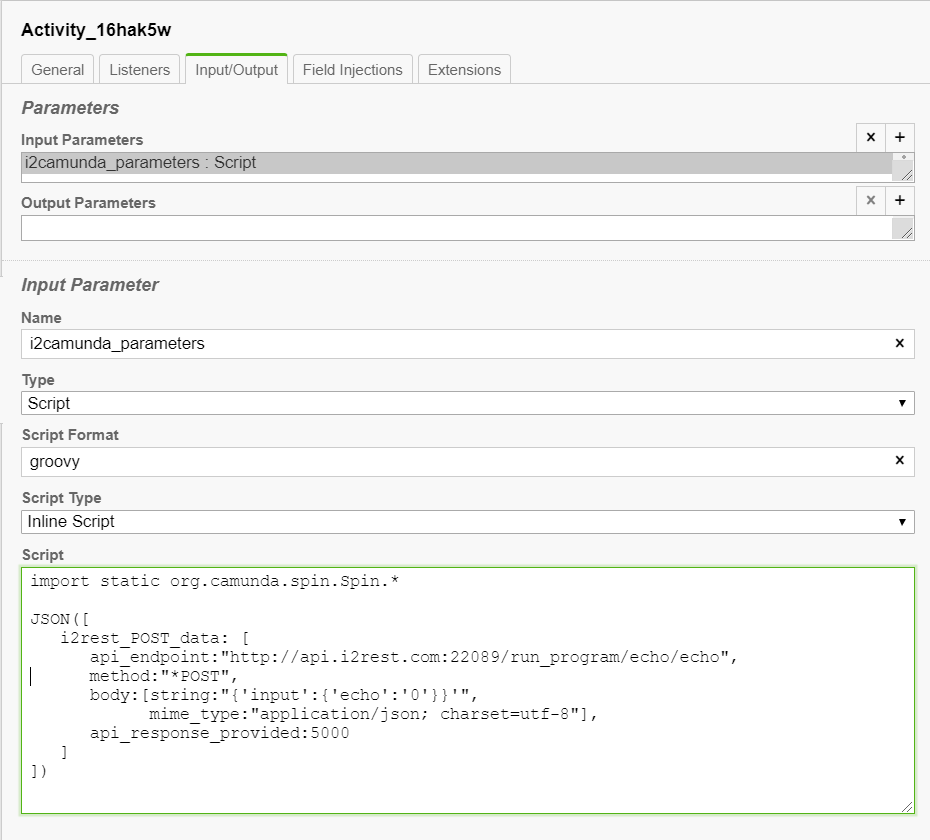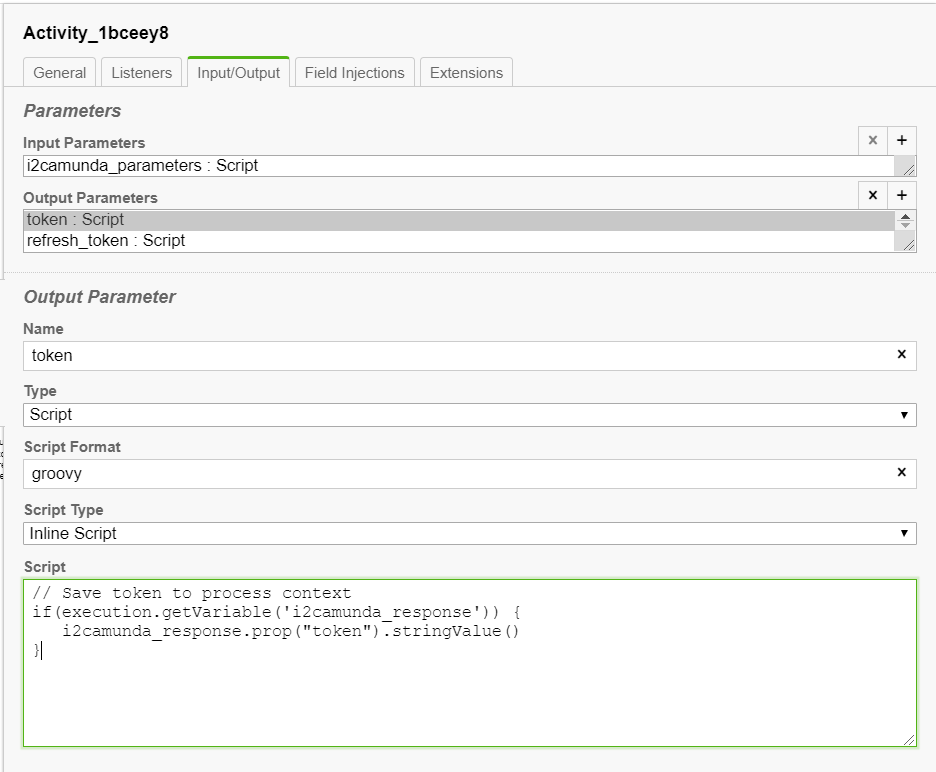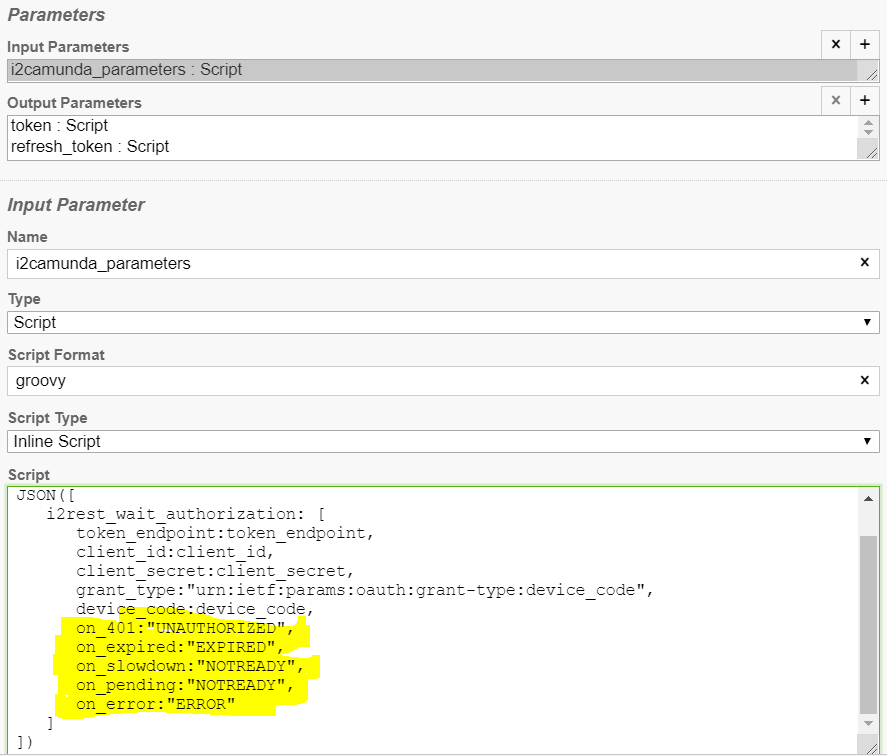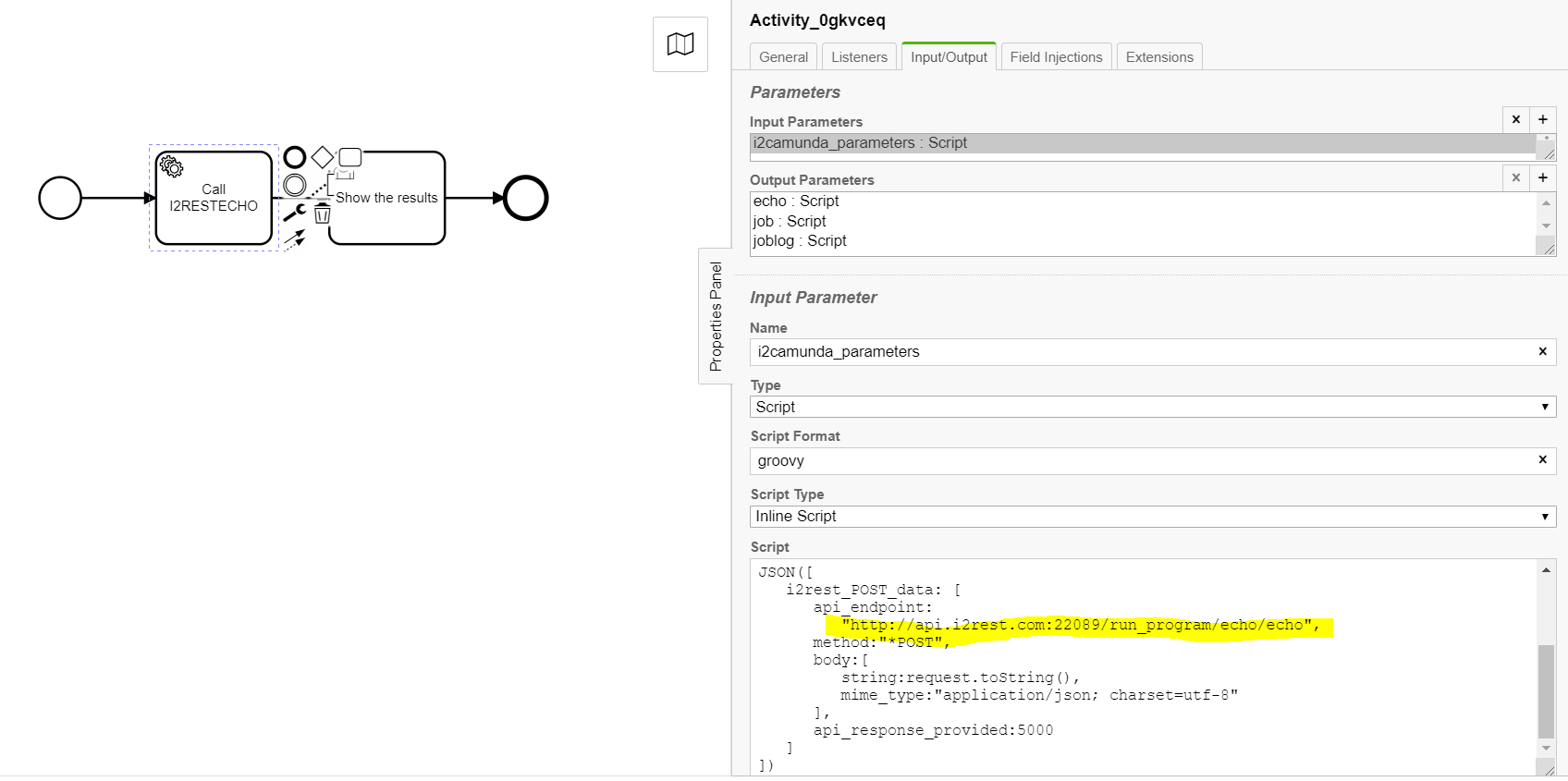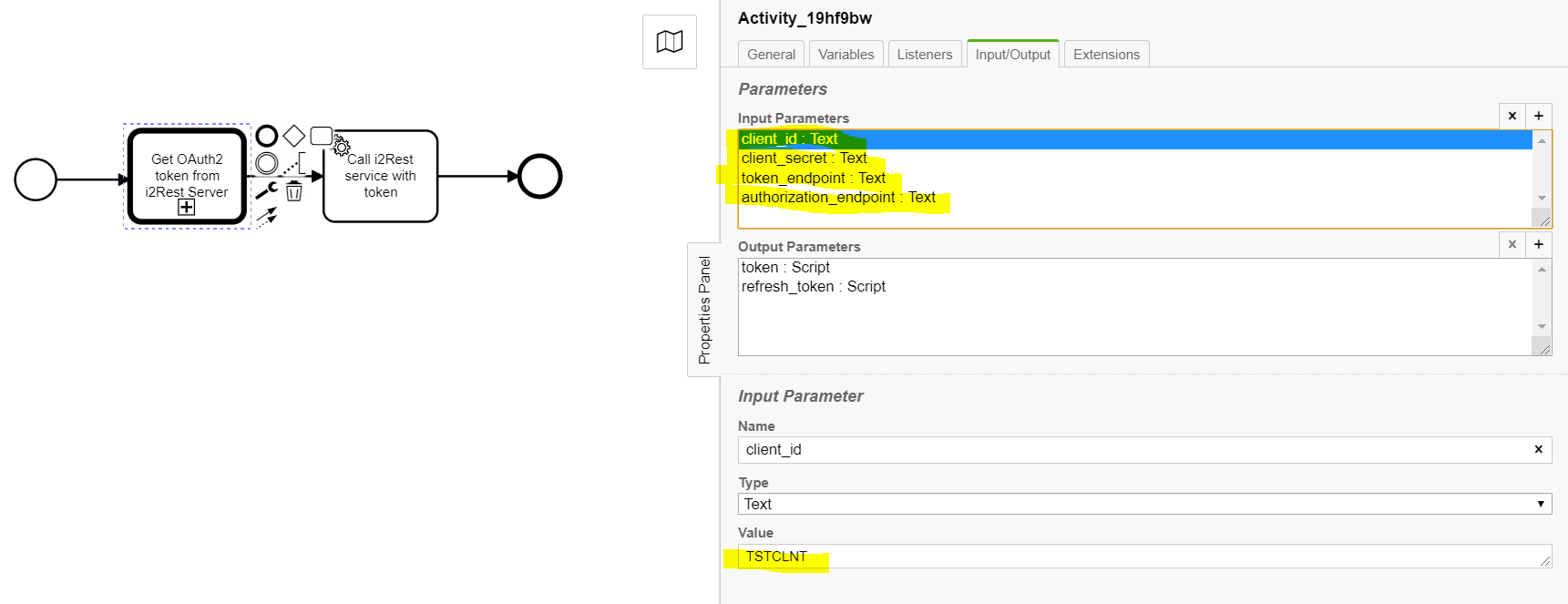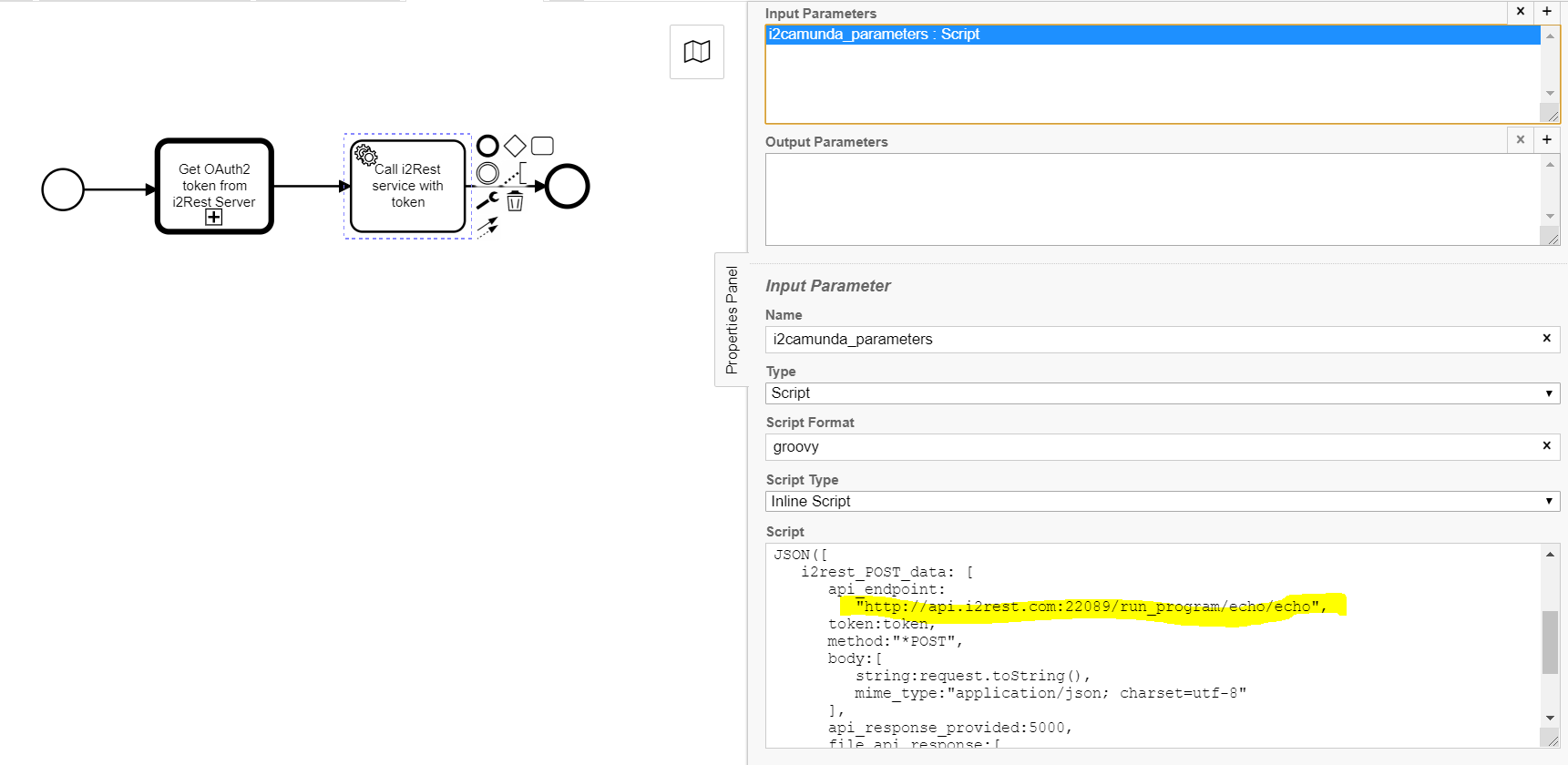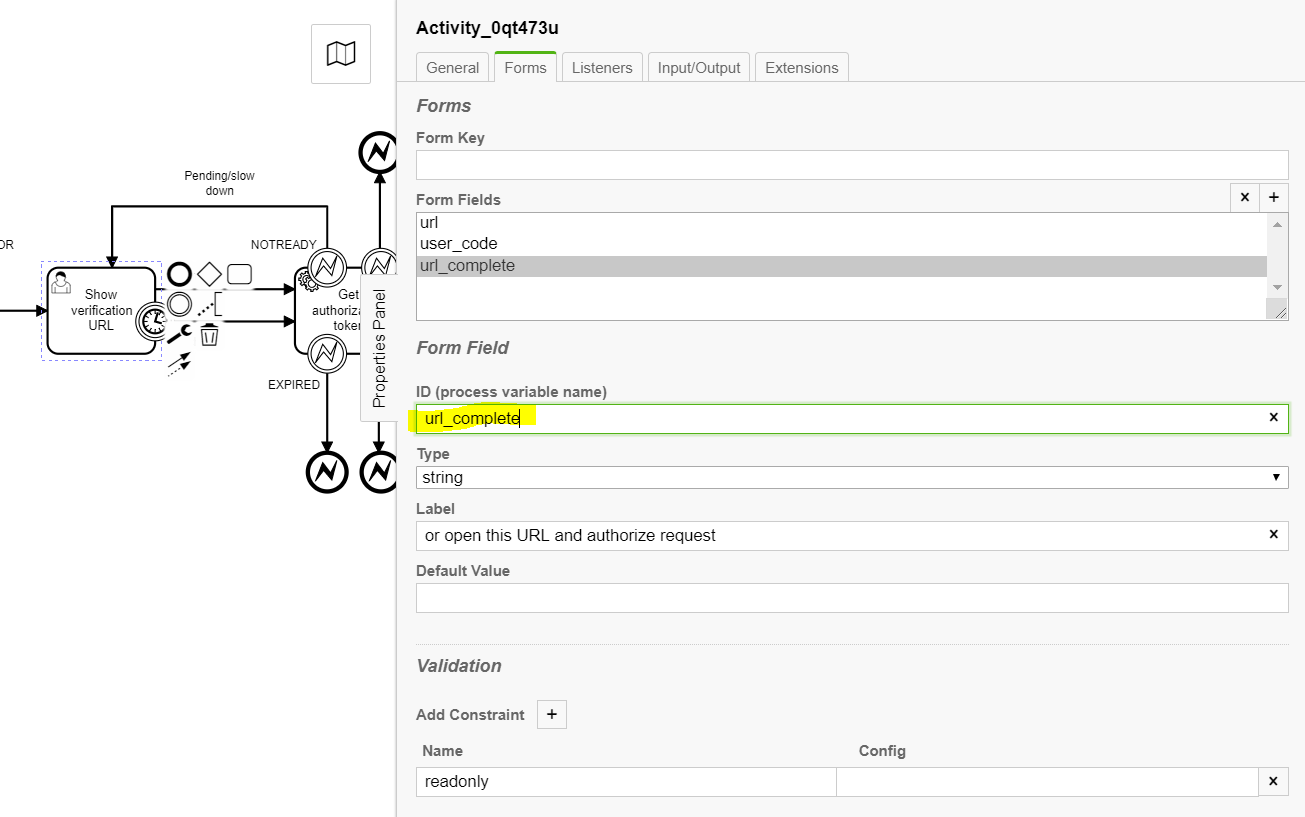What is i2Camunda?
We are still working on this topic. Please contact contacts@i2rest.com if you would like to get more information ASAP
i2Camunda is a separate extension for i2Rest Server, which is designed to organize the interaction of the Camunda BPM engine with IBM i programs and commands via i2Rest Server APIs.
Contents
What is Camunda
Camunda is currently one of the most prominent players in the business process automation industry. From wikipedia:
- Camunda BPM is an open-source workflow and decision automation platform. Camunda BPM ships with tools for creating workflow and decision models, operating deployed models in production, and allowing users to execute workflow tasks assigned to them. It is developed in Java and released as open-source software under the terms of Apache License.
- It provides a Business Process Model and Notation (BPMN) standard compliant workflow engine and a Decision Model and Notation (DMN) standard compliant decision engine, which can be embedded in Java applications and with other languages via REST.[1]
More details can be found at the Camunda's official site
We are not describing here the process of Camunda implementation and customization. There are a lot of guides available at Camunda official site and forums.
It is possible to start working with i2Camunda on top of Camunda Open Source Community Edition (https://camunda.com/download/). You can install it on any supported environment: https://docs.camunda.org/manual/latest/introduction/supported-environments/
i2Camunda as an External Task processor for Camunda
The concept of external tasks is well described on the Camunda official documentation website: https://docs.camunda.org/manual/latest/user-guide/process-engine/external-tasks/
i2Camunda plays the role of the External worker in this concept. i2Camunda is a batch job on IBM i, which subscribes to specific topic(s) and consume calls to REST APIs of i2Rest Server:
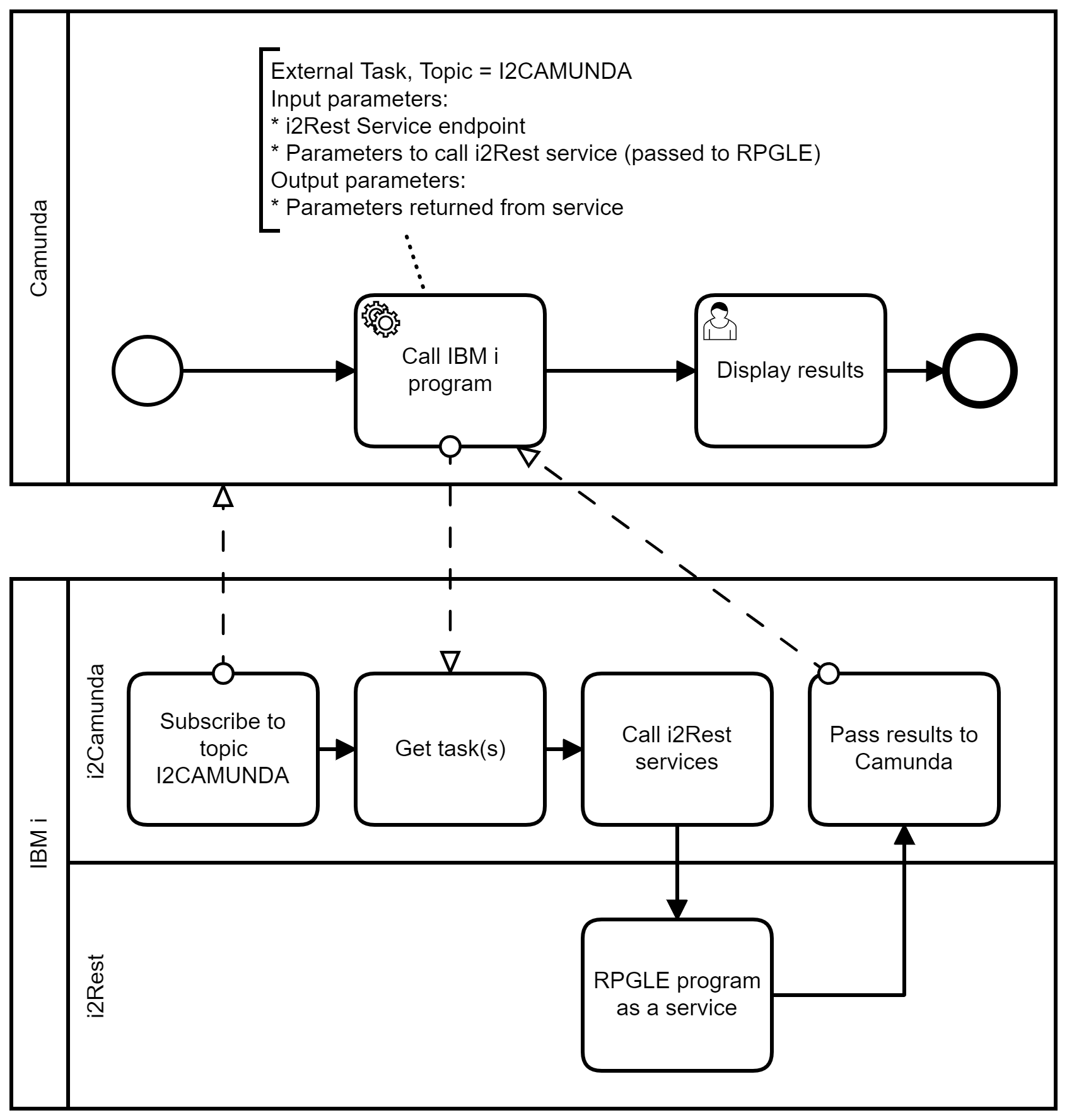
This diagram shows communications on the simplest BPMN process. The upper part displays the business process configured and executed in the Camunda environment, the lower part shows the interaction of i2Rest and i2Camunda, that works natively on IBM i platform
- After submitting, i2Camunda subscribes to Camunda as an external worker that will process external tasks with "I2CAMUNDA" topic
- When some Camunda's business process will reach external task with such topic, i2Camunda will get piece of job to work
- i2Camunda will call i2Rest Service in accordance with external task parameters defined in the BPMN diagram
- Output parameters of RPGLE program will be passed to Camunda as a process variables, and task will be marked as Completed
i2Camunda input parameters
In order to pass parameters to i2Camunda, it is required to define external task's Input parameter:
Task's input parameter "i2camunda_parameters" has to contain all data required to call REST API. It can contain one of the following objects, depending on the function that is required to call:
- i2rest_POST_data - to make simple http request to web server, with or without OAuth2 access token
- i2rest_request_authorize - to request user and device codes (first step of OAuth2 Device code flow)
- i2rest_request_bridge_authorize - to submit the request for Bridge device code and bridge user code (first step of OAuth2 Access code flow in i2Rest Bridge mode)
- i2rest_wait_authorization - to get OAuth2 token (last step of OAuth2 Device code flow)
- i2rest_get_access_token - to get Access code (second step of OAuth2 Access code flow in i2Rest Bridge mode)
- i2rest_get_fresh_token - to present refresh token and exchange it to new access token (OAuth2 Refresh token flow)
- i2rest_request_client_credentials_token - to obtain OAuth2 Client credentials token
i2Camunda output parameters
When the call to i2Rest service ends, i2Camunda completes external task and sets local variable named i2camunda_response. You can use this variable in the Output mapping to retrieve response data and set required process variables, for example:
The type of local variable i2camunda_response is SpinJsonNode. To access its properties, it is required to use method prop, like shown above. More details here: https://docs.camunda.org/manual/latest/reference/spin/json/01-reading-json/#reading-json-properties
Handling i2Camunda BPMN errors
Like any other service, calls to i2Rest Server APIs can return errors. Errors can be vary - from authorization errors to functional errors returned by RPGLE programs. Depending on parameters, defined in i2camunda_parameters, i2Camunda can raise BPMN errors, or create incidents. Each i2Camunda function has set of predefined parameters where you can define the codes for BPMN error to raise. In case of errors, the task will be completed with a corresponding BPMN error. If no corresponding BPMN error is defined for an error, or if an BPMN error cannot be raised, an incident will be created.
For example:
and a piece of BPMN diagram:
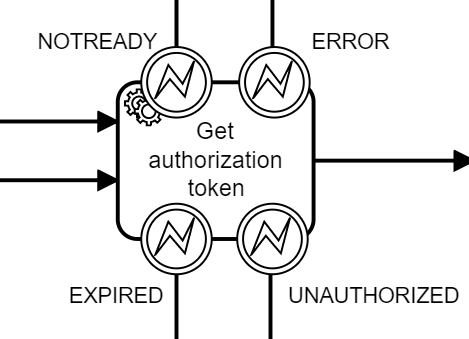
How to install i2Camunda
See i2Camunda installation instructions
i2Camunda configuration
To run i2Camunda you must prepare configuration file. Configuration file is a text file stored on IFS system. It has to contain i2Camunda settings object in JSON format - see i2Camunda configuration object
How to start i2Camunda instance
To start i2Camunda instance, please add I2REST library to your library list, and issue the following command:
SBMJOB CMD(CALL PGM(I2CAMUNDA) PARM('-start' '-config' '<path to i2Camunda configuration file>')) ALWMLTTHD(*YES)
You can set up other parameters of SBMJOB according your requirements. It it required to set ALWMLTTHD(*YES)
Sample processes
All sample processes shown here uses I2RESTECHO program to demonstrate program calls
Anonymous calls
This case was built on top of basic i2Rest setup

Source: https://www.i2rest.com/download/i2Camunda_samples/Simple_I2RESTECHO.bpmn
Do not forget to enter actual URL of your i2Rest Server instance at the i2camunda_parameters input mapping:
Authorized call using OAuth2 token
This case shows the ability to make authorized calls to RPGLE programs. We will demonstrate it on the basis of the scenario i2Rest Service with OAuth2 parameters. This scenario demonstrates classic OAuth2 Device flow that can be used for all browserless devices. We are also demonstrate this flow with out i2Rest Client - see here
To simplify the process, we will divide overall BPMN to two separate processes - main process and external sub process which will implement logic for obtaining OAuth2 token from i2Rest Server. This solution also allows the sub process to be reused in other processes where communication with the server using a OAuth2 token is required
Main process
This process is extremely simple. At the first step, we call the sub process to get the token. At the second step, we call the RPGLE demo program using the OAuth2 token.

Source: https://www.i2rest.com/download/i2Camunda_samples/calli2Rest.bpmn
Again, we have to update some parameters of tasks:
and
Of course, in more sophisticated process we can define these parameters at the entire process level (for example, in process start listener)
geti2RestToken sub process
This sub process will encapsulate all logic related with obtaining of OAuth2 token from i2Rest Server
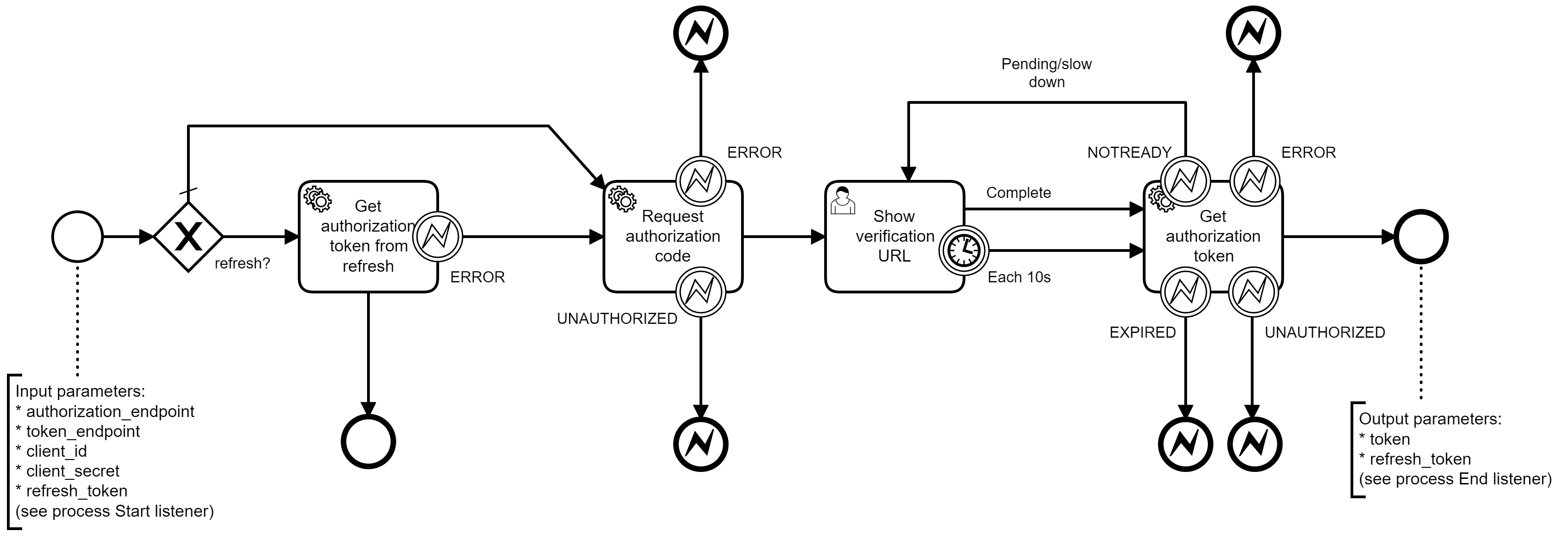
Source: https://www.i2rest.com/download/i2Camunda_samples/geti2RestToken.bpmn
First, it will take parameters from upper level process (see process start listener):
- authorization_endpoint
- token_endpoint
- client_id
- client_secret
- refresh_token
Than, if refresh_token parameter has been passed, it will try to get new token using refresh_token (leftmost activity on the diagram).
In case of successful call, the sub process will return token and new refresh_token to the upper level process
If refresh_token is absent, or in case of any error during the previous step, the subprocess will try to request the user_code, device_code and verification_url from i2Rest Server (second activity from the left)
In case of unrecoverable errors (for example, Client is unauthorized or i2Rest Server is unavailable), sub process will raise BPMN errors. Now our main process has no Error boundary events, it means that incident will be created.
The next step is the User Task. It will show the user the results of the previous call. Among with other parameters, the user will see the address at which he can authorize a request to receive a token, it will be shown in process variable url_complete:
User will have to open this URL in his browser, and allow or decline the request of the client (ie Camunda PBM engine) for run programs with his (user) authority. This step is not shown on the process diagram, because it is not managed by Camunda BPM engine.
At the same time, task "Get authorization token" will try to get access token from i2Rest Server using device_code that was obtained early
If user still not decided to allow or decline the request, process will continue at the task "Show verification URL" again
When user allows i2Rest Server to issue access token for the client, task "Get authorization token" will be completed and access token will be returned to upper level process
Another decision will raise BPMN error or create new incident
Of course, this process can be optimized for your needs, in this form it only demonstrates the possibility of building a OAuth2 flow using i2Camunda tasks
